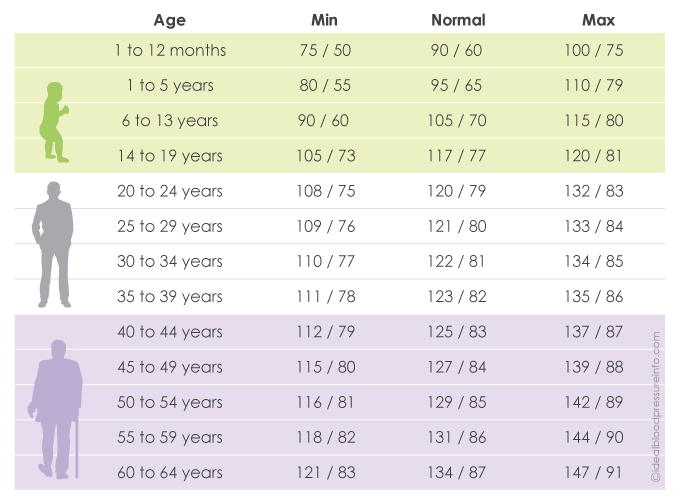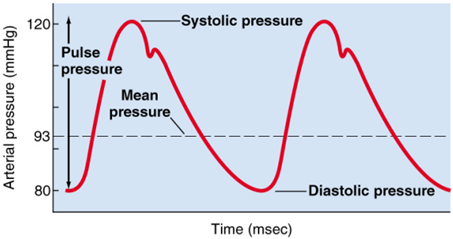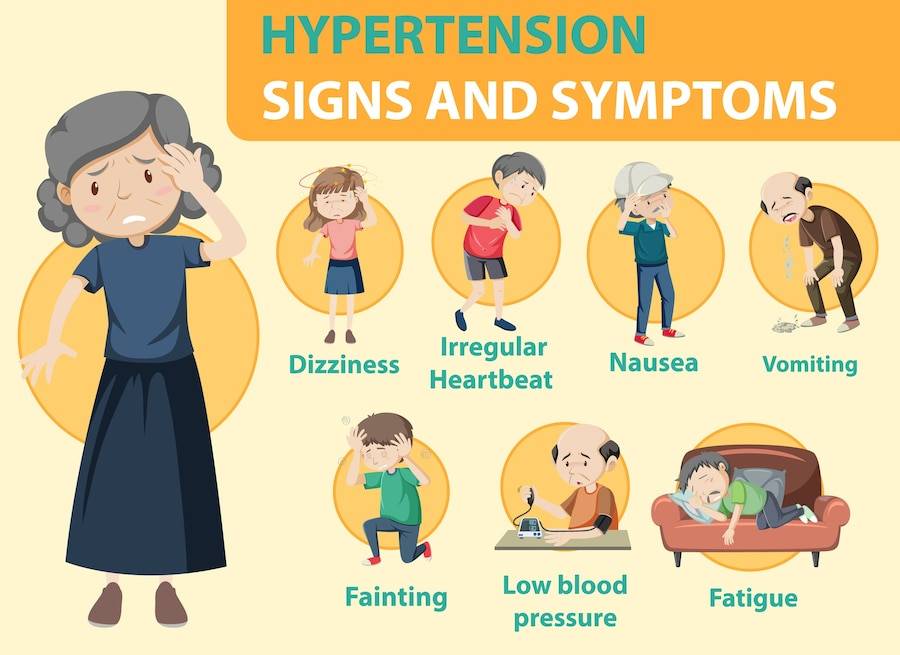A Comprehensive Guide
In this day and age, where health has become a major priority of people from every walk of life, everybody is concerned about their body’s physiology for good. When you lack a healthy mind and body, everything else in your life, like studies, work or lifestyle suffers. In today’s constantly challenging life, the harsh realities and stress have affected the human body-the circulatory system being affected the most. All our body organs receive their blood supply though a network of arteries that provide the necessary means of oxygen and nutrients to the important organs like the brains, liver, bones, kidneys, etc. When there is a nuisance in the body’s vasculature, the blood pressure is disturbed and upsets the organs-perfusion balance.
What is Blood pressure?

So the first question that pops into your mind while reading this article is, what is “Blood Pressure?” In general, an individual’s “blood pressure,” or systemic arterial pressure, refers to the pressure measured within large arteries in the systemic circulation. This number splits into systolic blood pressure and diastolic blood pressure. Systolic pressure is the maximum pressure within the large arteries when the heart muscle contracts to propel blood through the body. Diastolic pressure describes the lowest pressure within the large arteries during heart muscle relaxation between beating. (1)
Each cardiac contraction cycle propels a bolus of 70 milliliters of blood into the systemic arterial system, perfusing organs with oxygen and nutrients. This propulsion imparts pressure on the vascular wall, the level of pressure depending solely upon the cardiac output (the amount of blood pumped by the heart) and the resistance to flow imparted by the vasculature. (7)
The most accurate arterial blood pressure measurement is obtained by direct methods involving sophisticated and vast equipment and the cannulation of an artery. Although these methods are necessary for some settings, sphygmomanometer measurements are much easier, safer, and accurate enough for most clinical settings.
How to take Blood Pressure:
To keep up with the variations in your blood pressure, it is important to check it by yourself or any medical staff routinely. Regular measurement of your blood pressure helps you make an early diagnosis of your health condition and prompt treatment.
Blood pressure is traditionally measured using auscultation with a mercury-tube sphygmomanometer. It is measured in millimeters of mercury and expressed in terms of the systolic pressure over diastolic pressure. (2)
Method to take Blood Pressure:
Checking a person’s blood pressure should follow a certain set of rules and regulations to make it accurate and precise.
- The blood pressure is usually taken with the patient seated in a comfortable position. Additional information may be taken by checking the patient’s lying and standing positions.
- Supine blood pressure should be compared to that obtained after the patient has been standing for a sufficient time to allow the pulse to stabilize.
- Normally, systolic blood pressure should not drop more than 10 mm Hg, and diastolic pressure should remain unchanged or rise slightly.
- Significant orthostatic changes in blood pressure may indicate dehydration or an adverse drug reaction.
All these considerations give maximum evidence to the medical practitioner that the patient is not suffering from any genetic abnormalities that affect the blood pressure, i.e., orthostatic Hypotension
What are the variations in Blood Pressure?
Blood pressure, being an extremely variable factor, fluctuates significantly during a person’s life, majorly changing with age and work conditions. A person’s blood pressure does not remain the same throughout the day.
The role of arterial pressure regulation is to maintain a high enough pressure that allows for proper perfusion of body tissue and organs but not so high as to cause bodily harm. (1)
Systolic pressure normally varies with respiration. During inspiration, the negative intrathoracic pressure causes blood pooling in expanding pulmonary vessels, and delays flow to the left ventricle. Thus, systolic pressure falls as cardiac output falls momentarily. (2)

Essential Hypertension:
Essential Hypertension, or Hypertension of unknown cause, accounts for more than 90% of cases of Hypertension. It tends to cluster in families and represents a collection of genetically based diseases or syndromes with several resultant inherited biochemical abnormalities (4)
With increased recognition of specific causes, it may be possible to develop therapies selective for distinct pathophysiologic mechanisms with fewer adverse effects, resulting in more effective blood pressure reduction.
The minimum acceptable blood pressure is determined by adequate perfusion of the vital organs without symptoms of Hypotension. This is usually more than 90 mm Hg systolic and 60 mm Hg diastolic, although there can be great variation between patients. (2)
Is it normal for blood pressure to fluctuate?

As far as the fluctuations in blood pressure are concerned, they can happen within a limited range. Blood pressure fluctuations are completely normal, as the architecture of human vasculature changes over time. Thus, blood pressure tends to change with age. However, extreme blood pressure changes often manifest as symptoms of headache, nausea, dizziness, fatigue, blurred vision, and palpitations.
Blood pressure association with Circadian cycle:
You might wonder why we sleep at night and work during the day. Also, we get hungry at specific times of the day. All these processes are intricately intertwined with our body’s clock-named circadian cycle.
The circadian clock is a cellular timekeeping mechanism that helps organisms, from bacteria to humans, organize their behavior and physiology around the solar cycle. (9)
The dip in blood pressure during the resting period is paradoxically associated with an increase in total peripheral resistance and occurs when the vascular response to vasoconstrictor compounds is heightened, and vasodilators are reduced. (6)
There is a strong time-of-day variation in the vasoconstriction in response to sympathetic stimulation that may contribute to the time-of-day variation in blood pressure, characterized by a dip in blood pressure during the individual’s rest period when sympathetic activity is low. (8)
How does daily variation affect Blood Pressure?
There is evidence linking circadian variation in blood pressure and circadian variations in vascular contraction.
A cellular mechanism for the circadian variations in blood pressure that links directly to the peripheral circadian clock. Relaxation of vascular smooth muscle cells involves endothelial-derived relaxing factor (EDRF), which is nitric oxide (NO) produced by endothelial NO synthase (eNOS), and endothelial-derived hyperpolarizing factor (EDHF), which includes hydrogen peroxide (H2O2) produced by NADPH oxidase (Nox). Both of these enzymes appear to be under the direct control of the circadian clock mechanism in the endothelial cells, and disruption of the clock results in endothelial and vascular dysfunction. (5)
Blood pressure in Pregnancy:
An important consideration of blood pressure changes is in females of reproductive age. Hypertension in Pregnancy is one of the main causes of maternal, fetal, and newborn morbidity and mortality in civilized countries. Systolic blood pressure greater than or equal to 170 mm Hg or diastolic blood pressure greater than or equal to 110 mm Hg in pregnant women must be considered a serious condition necessitating hospitalization. (3)
This condition may lead to pre-eclampsia or eclampsia, which is life-threatening to the child and the mother.
Drug administration to reduce Hypertension is instituted after reaching the same threshold values in females with gestational Hypertension with the same threshold values of blood pressure in the case of pre-existing Hypertension in the presence of accompanying diseases or organ malfunction
What should blood Pressure be in the Morning?
As a person’s blood pressure does not stay the same during the entire 24 hours of the day, Studies have proved that there is a morning surge in blood pressure.

The morning surge in blood pressure (MSBP) is a benign response to the physiological challenges during the first 3 h after waking, which is clinically important. Therefore, scientists have scrutinized the circadian-related mechanisms, the measurement methods, and the prognostic value of the Morning Surge Blood Pressure. The MSBP is relatively small (<2 mmHg) under constant routine conditions. Nevertheless, the blood pressure response to exercise can be 8-14 mm Hg greater in the Morning vs. afternoon, even when prior sleep is controlled. (10)
Relationship of Cardiovascular events with Morning Time:
One of the manifestations of extreme blood pressure changes is circulatory collapse, leading to major cardiovascular disruptions.
Cardiovascular events occur most frequently in the Morning. The morning surge in blood pressure may be associated with hypertensive target organ damage and subsequent cardiovascular risk in hypertensive patients. (11)
When is the best time to take your Blood Pressure?
For blood pressure measurement, time plays an important role.
Make sure to measure your blood pressure at least twice daily. Take it first in the Morning before eating or taking any medications. Take it again in the evening. Each time you measure, take two or three readings to ensure your results are the same. Your healthcare provider might recommend taking your blood pressure simultaneously each day.
Don’t measure your blood pressure right after you wake up. You can prepare for the day, but don’t eat breakfast or take medications before measuring your blood pressure. If you exercise after waking, take your blood pressure before exercising.
Avoid food, caffeine, tobacco, and alcohol for 30 minutes before taking a reading. Also, empty your bladder first. A full bladder can increase blood pressure slightly.
Adverse effects of Hypertension:
Hypertension means an increase in blood pressure more than normal.
Prolonged exposure to elevated pressure is associated with increased cardiovascular disease like stroke, dissecting aneurysm, heart attack, kidney problems like renal failure, and eye issues like retinopathy. However, there is evidence that morbidity and mortality can be reduced with proper treatment of Hypertension.
Adverse effects of Hypotension:

Hypotension being another extreme, can be as drastic as Hypertension. It can lead to syncope, which can be life-threatening.
Syncope is a temporary interruption of cerebral perfusion with a sudden and transient loss of consciousness and spontaneous recovery. Approximately one-third of the population experiences syncope at least once during a lifetime. Presyncope signs and symptoms, including weakness, headache, blurred vision, diaphoresis, nausea, and vomiting, are sometimes present for seconds or minutes before losing consciousness. (12)
References:
(1) Shahoud JS, Sanvictores T, Aeddula NR. Physiology, Arterial Pressure Regulation. [Updated 2021 Sep 6]. In: StatPearls [Internet]. Treasure Island (FL): StatPearls Publishing; 2022 Jan-. Available from: https://www.ncbi.nlm.nih.gov/books/NBK538509/
(2) Brzezinski, W. A. (1990). Blood Pressure. In H. K. Walker (Eds.) et. al., Clinical Methods: The History, Physical, and Laboratory Examinations. (3rd ed.). Butterworths.
(3) Cífková R. (2006). Hypertenze v tehotenství [Hypertension in pregnancy]. Vnitrni lekarstvi, 52(3), 263–270.
(4) Oparil, Suzanne (2003). Pathogenesis of Hypertension. Annals of Internal Medicine, 139(9), 761–. doi:10.7326/0003-4819-139-9-200311040-00011
(5) Rodrigo, G. C., & Herbert, K. E. (2018). Regulation of vascular function and blood pressure by circadian variation in redox signalling. Free radical biology & medicine, 119, 115–120. https://doi.org/10.1016/j.freeradbiomed.2017.10.381
(6) Denniff, M., Turrell, H. E., Vanezis, A., & Rodrigo, G. C. (2014). The time-of-day variation in vascular smooth muscle contractility depends on a nitric oxide signalling pathway. Journal of molecular and cellular cardiology, 66, 133–140. https://doi.org/10.1016/j.yjmcc.2013.11.009
(7) Richard P. Lifton; Ali G. Gharavi; David S. Geller (2001). Molecular Mechanisms of Human Hypertension. , 104(4), 0–556. doi:10.1016/s0092-8674(01)00241-0
(8) Rodrigo, G. C., & Denniff, M. (2016). Time-of-day variation in vascular function. Experimental physiology, 101(8), 1030–1034. https://doi.org/10.1113/EP085780
(9) Rey, G., & Reddy, A. B. (2015). Interplay between cellular redox oscillations and circadian clocks. Diabetes, obesity & metabolism, 17 Suppl 1, 55–64. https://doi.org/10.1111/dom.12519
(10) Atkinson, G., Batterham, A. M., Kario, K., Taylor, C. E., & Jones, H. (2014). Blood pressure regulation VII. The “morning surge” in blood pressure: measurement issues and clinical significance. European journal of applied physiology, 114(3), 521–529. https://doi.org/10.1007/s00421-013-2692-x

